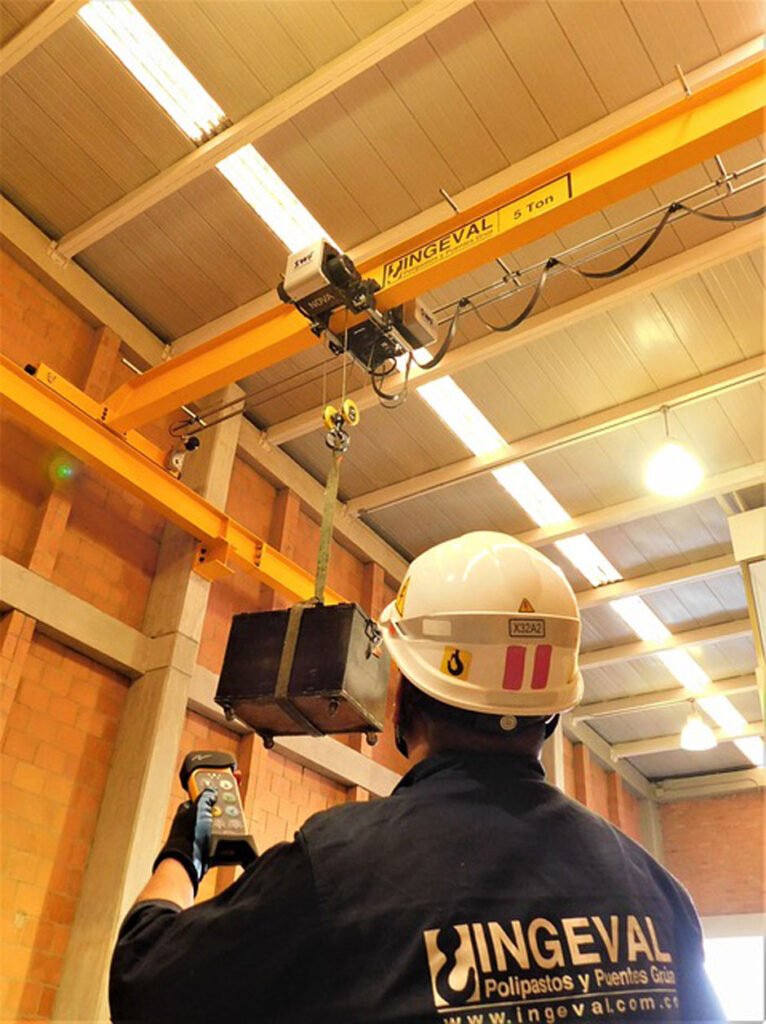Choosing the right crane is critical for any production business, impacting efficiency, safety, and overall operational success. To navigate this decision-making process effectively, consider the following seven imperative tips. Each tip addresses vital aspects ranging from load capacity and budget considerations to crane configuration, durability, and the importance of expert consultation. By systematically evaluating these factors, you can make an informed decision that aligns with your production needs. It will also allow you to choose a crane that seamlessly integrates into your facility.
Assess Load Capacity and Dimensions
When selecting an overhead crane, the first step is a meticulous assessment of your production requirements, focusing on the weight and dimensions of the loads it will handle. This involves calculating average and maximum weights while considering potential future growth. It’s equally essential to evaluate spatial constraints within your facility to ensure the crane fits seamlessly into your workspace. A comprehensive understanding of load specifications guides you toward a crane with the appropriate capacity and size, aligning with your production demands and spatial limitations.
Budget Considerations
Establishing a clear budget is vital for selecting a crane that meets your operational needs and aligns with your financial constraints. Beyond the initial purchase cost, consider ongoing expenses such as maintenance, repairs, and operating costs. Prioritizing cost-effectiveness should maintain safety and efficiency. Investing in a high-quality crane can prevent accidents and minimize downtime, contributing to long-term cost savings. Striking a balance between upfront costs and long-term value ensures a financially sound decision that enhances productivity without sacrificing safety.
Crane Configuration and Design
Optimizing efficiency in your production process requires careful consideration of the crane’s configuration and design. Evaluate whether a single or double girder crane suits your application, factoring in lift height, span and duty cycle. Additionally, scrutinize design features like hoist and trolley speed, tailoring your choice to the specific needs of your operation. Well-thought-out crane configuration and design contribute significantly to productivity and safety, ensuring seamless integration into your production workflow.
Durability and Maintenance Requirements
The operational environment plays a pivotal role in the longevity of your crane. Consider temperature, corrosive substances, and dust levels when assessing durability. Opt for a crane with protective features that align with your environmental challenges. Equally important is evaluating maintenance requirements, as regular upkeep is essential for safety and longevity. Choosing a crane with minimal maintenance needs not only saves time and resources but also contributes to uninterrupted operational efficiency.
Expert Consultation and Training
Incorporate the expertise of professionals during the crane selection process. Consultation with engineers or crane specialists provides valuable insights into the unique requirements of your production setup. Additionally, invest in comprehensive training for crane operators to ensure safe and efficient handling of the chosen model. Operator proficiency enhances workplace safety and maximizes crane utilization, contributing to overall operational excellence. Expert guidance and thorough training are essential to a successful crane integration strategy.
Footprint and Layout Optimization
Consider the footprint of the crane in relation to your facility’s layout. Evaluate the available space, aisle widths, and potential obstacles to ensure the crane’s installation doesn’t disrupt workflow or create bottlenecks. Optimization of the layout involves strategically placing the crane to maximize coverage and minimize dead spaces, improving overall operational efficiency. Assess whether a wall-mounted or freestanding crane suits your layout and factor in future expansion plans. A well-thought-out footprint and layout strategy contribute to a seamless integration that enhances productivity and safety in your production environment.
Government Regulations and Standards Compliance
Ensure the selected crane complies with relevant government regulations and industry standards. Familiarize yourself with safety codes, load testing requirements, and any specific rules governing crane operation in your region. Adhering to these standards promotes a safer working environment and helps avoid legal complications and potential fines. Verify that the crane manufacturer meets certification standards, providing documentation of compliance. Regular inspections and maintenance should align with regulatory requirements to guarantee ongoing safety and compliance. Prioritizing adherence to regulations is essential for the longevity of your crane system and the well-being of your workforce.
Conclusion
In conclusion, selecting the right crane demands systematically evaluating factors ranging from load capacity and budget considerations to crane configuration, durability, and expert consultation. By carefully navigating these aspects, businesses can make informed decisions that align with their production needs, financial constraints, and long-term operational goals. A well-chosen crane enhances efficiency and contributes to a safer and more productive work environment. Good luck with increasing your business’ efficiency.

